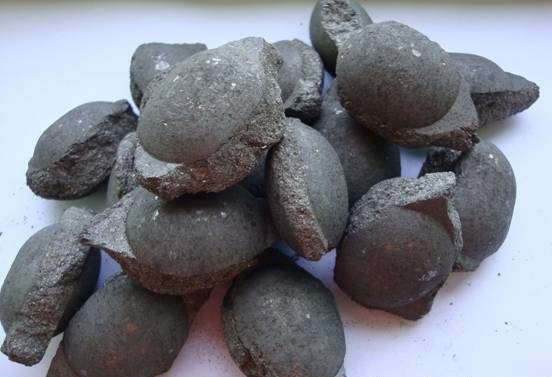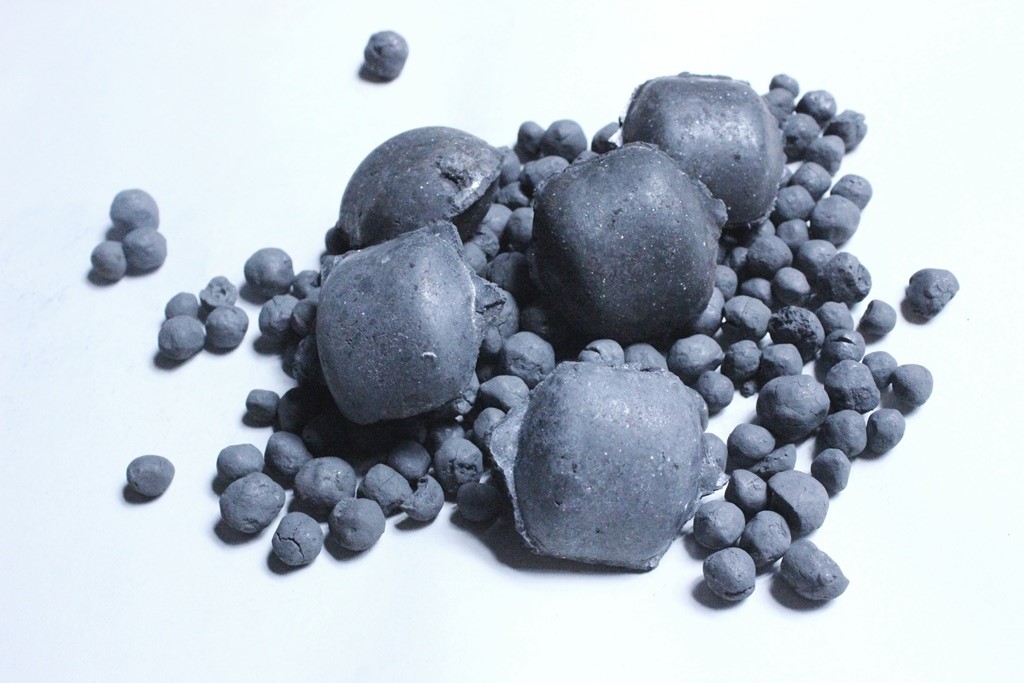Iron and steel has always been one of the industries taking advantage of briquetting technology such as sponge iron briquetting which makes a great feed for steelmaking furnaces worldwide.
Depending on the temperature of the sponge iron, Briquetting Process is divided into hot and cold briquetting. Below, we will focus on the latter:
[su_note note_color=”#f8f8bc”]Note: this article is unrelated to “Central Board of Indirect Taxes and Customs (CBIC)”, “Central Bank of Iran”, “Centre for the Promotion of Imports”, “Central Bureau of Investigation”, “Confederation of British Industry” “CBSI technology enterprise”, “Central Bank of Solomon Islands”, “CBS Interactive” or “Comic Book Invest”.[/su_note]
Cold briquetting
In the cold briquetting process, the material is inputted into the briquetting machine at ambient temperature. In this process, according to the type of the input material, two types of products are known, Briquette of Sponge Iron Fine (Cold Briquetted Iron-CBI) and Briquette of Sponge Iron Pellet (Cold Briquetted Iron and Carbon – CBIC).
-
Briquette of Sponge iron fine
In the steel industry, just like any other industry, the optimization of by-products plays a significant role. Typically, in direct reduction units, some sponge iron fine is produced due to which the smaller dimensions (less than 6 mm), charging them directly to the furnace, will reduce the production efficiency and increase the losses. Thus, briquetting of sponge iron fine and its product called “Cold Briquetted Iron (CBI)” are used as a conventional solution to optimize the use of direct reduction units’ by-products.

Since the production volume of sponge iron fines is limited in the direct reduction unit (less than 10% of the direct reduction unit production volume), the capacity of the fines briquetting unit is also limited and this material is usually used in the steelmaking units adjacent to the direct reduction unit. In other words, because of its limited production and less desirable properties than other members of the sponge Iron family, it has never been a commercial product on the world market.
- Cold Briquetted of Pellet Sponge Iron
A significant number of direct reduction units in the world are producing cold sponge iron (CDRI). The inherent properties of sponge iron such as high specific surface area, low resistance to oxidation and abrasion as well as poor mechanical properties have made the storage and transportation process of this product always subject to risks and challenges so that the International Maritime Organization (IMO) has laid down strict rules for its shipment. For this reason, storage and transportation of sponge iron is a costly and risky business.
Today, Iran is recognized as one of the largest sponge iron producing countries in the world. Since almost all active direct reduction units in the country produce cold sponge iron, most of them have had difficulty in storing and transporting their sponge iron.

Thus, with recognizing this problem, as well as the imbalance of production capacity of the direct reduction units and active steelmaking plants in the country in different seasons, the country sought to provide a solution to overcome this problem, Invented Cold Briquetted Iron and Carbon (CBIC) as a new product in the sponge iron industry.
CBIC, also known as Cold Briquetted of Sponge Iron (CBSI), is a product produced in the briquetting process from cold sponge iron (CDRI) and due to its inherent properties, such as high density and mechanical strength and acceptable chemical stability, is recognized as a storable and transportable commodity in the direct reduction industry.
Characteristics and advantages over DRI and HBI
CBIC (or CBSI) has significant advantages over DRI and HBI including:
- Reduced specific surface area
- Reduced oxidation rate
- Lower porosity
- Increased density,
- Reduced maintenance and transportation costs,
- Improved steel production efficiency due to lower porosity, higher oxidation resistance, and higher carbon content.
- The very high flexibility of carbon content.
It is important to note that the input carbon, along with the furnace charge includes both Cementite and free carbon. According to studies, the effect of free carbon is greater than cementite carbon. The carbon in DRI and HBI is mainly (over 90%) cementite, but the carbon contained in CBIC is mainly free carbon, which can increase the efficiency of the steel plant and save on electrical energy consumption.
Economic estimates show that the cost of a 1% increase in carbon to CBIC is about 60% of the cost of a carbon increase to DRI. While increasing DRI carbon will increase the retention time of sponge iron in the reduction furnace and consequently reduce the production capacity of the unit. However, increasing CBIC carbon does not require additional operations.
On the other hand, as mentioned above, the type of carbon contained in CBIC is more favorable than DRI carbon. In other words, due to the homogeneous distribution of free carbon in the CBIC and easy accessibility of FeO to carbon, FeO reduction occurs in the solid-state and the rate of FeO reduction and formation of slag is higher than other methods of carbon enhancement.
Chemical and Physical analysis of CBI
The below table shows the typical Chemical and Physical Properties.
| Element |
CDRI |
CBIC |
| Fe total |
90-93 |
87-90 |
| Metallization |
92-95 |
92-95 |
| Carbon |
1.5-2 |
1.5-10 |
| Bulk density (ton/m3) |
1.6-1.9 |
2.2-2.5 |
| Water Absorption (wt%) |
14-16 |
3-5 |



